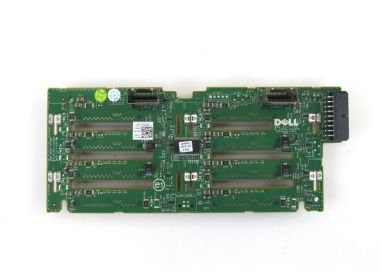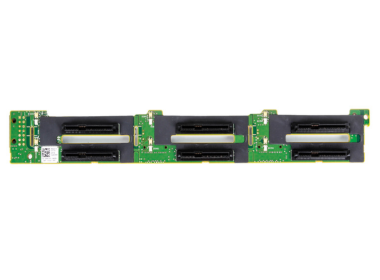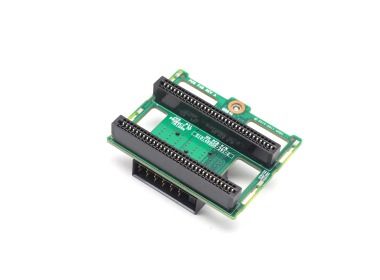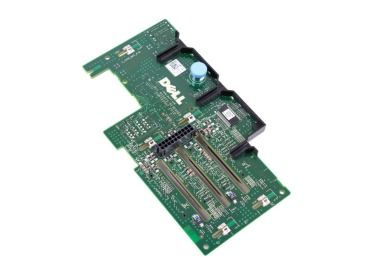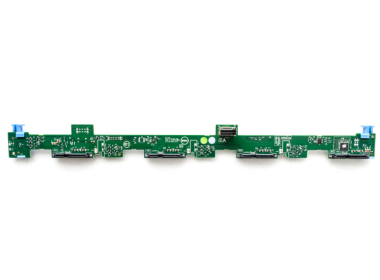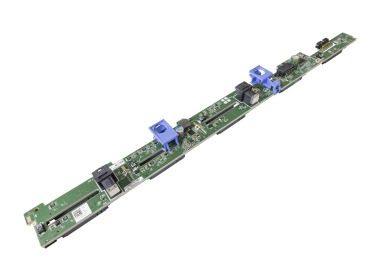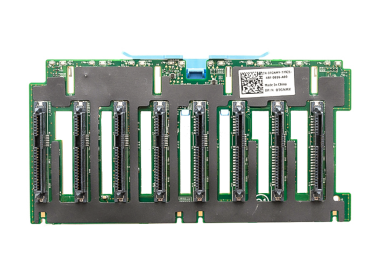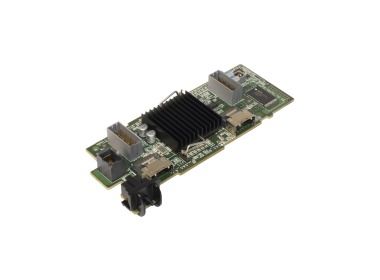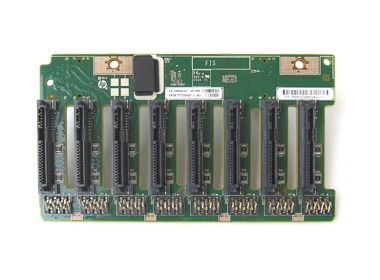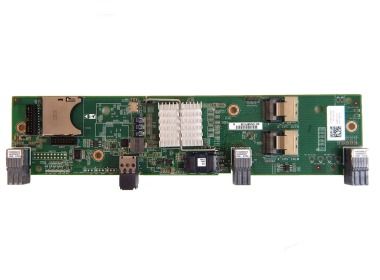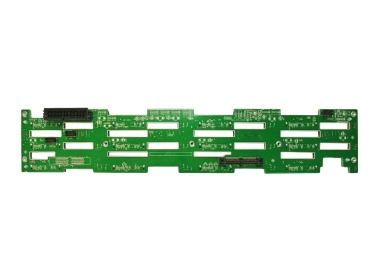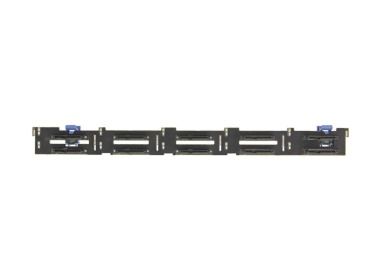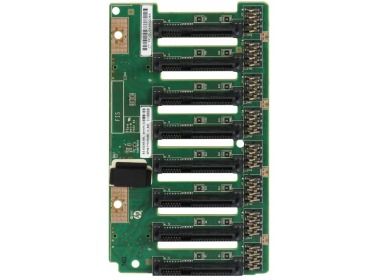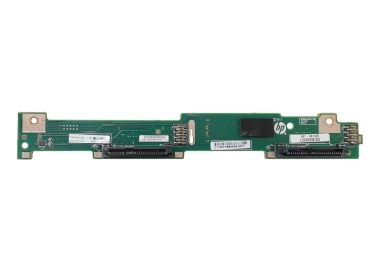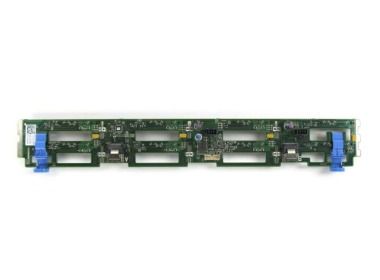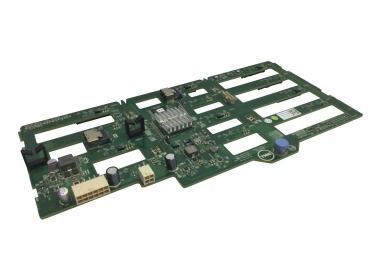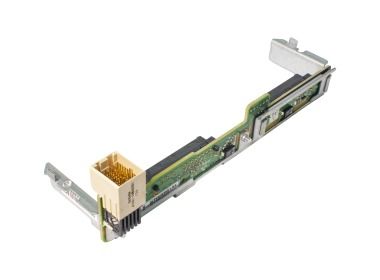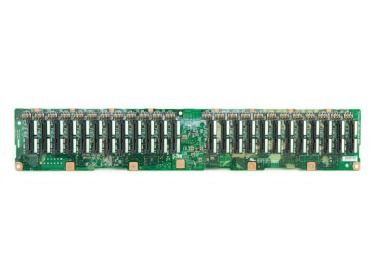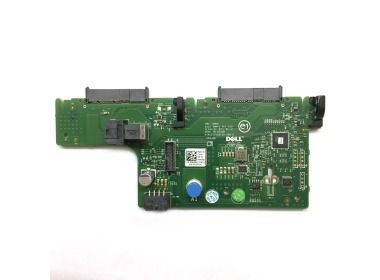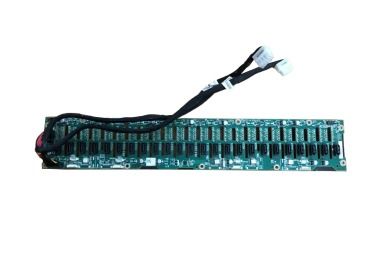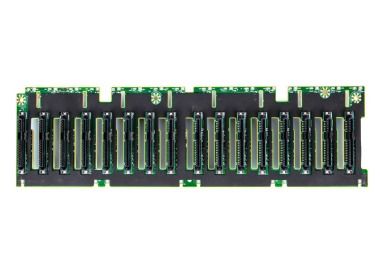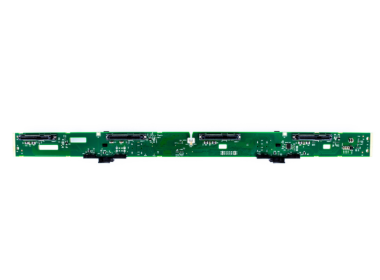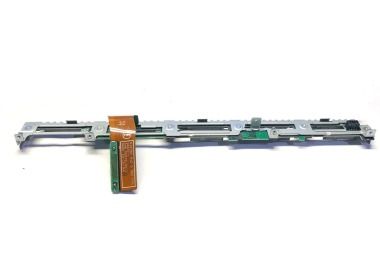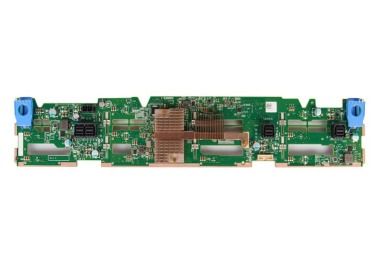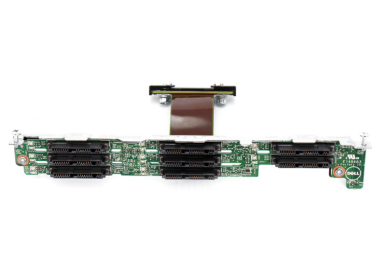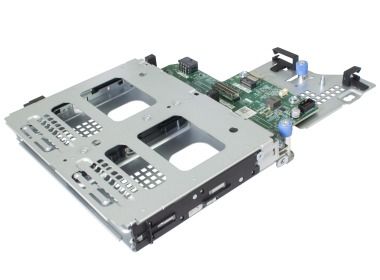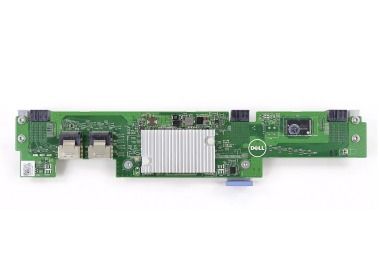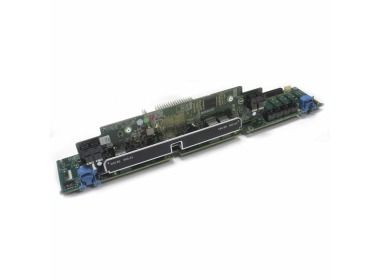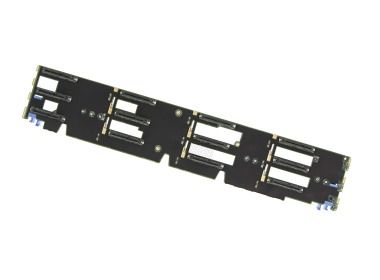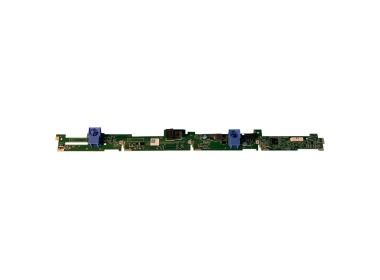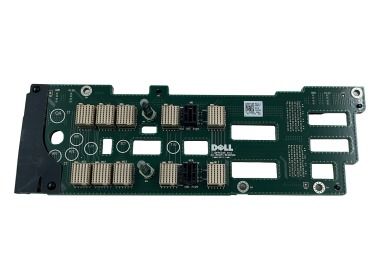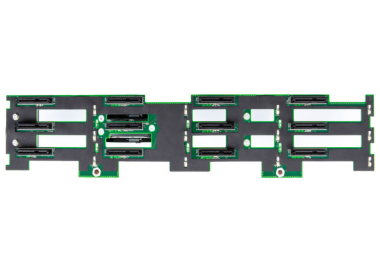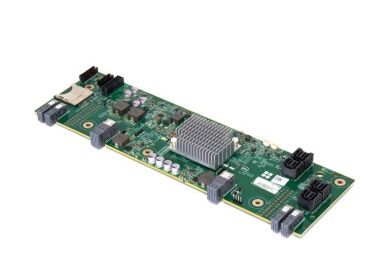- Backplane Dell PowerEdge R710 8x2.5" MX827Technical parameters: Bays amount - 8x2.5" Product designed for: PowerEdge R710 8x2.5" ...Calculating delivery time...In stock 1Warranty 12 monthsPLN 30.00 PLN 24.39
- Backplane Dell PowerEdge R620 4x2.5" PMHHGTechnical parameters: Bays amount - 4x2.5" Product designed for: PowerEdge R620 4x2.5" ...Calculating delivery time...In stock 5Warranty 12 monthsPLN 40.00 PLN 32.52
- Backplane Dell PowerEdge M520/M620 2x2.5" S110 RAID CYK8NTechnical parameters: Product designed for: ...Calculating delivery time...In stock 2Warranty 12 monthsPLN 40.00 PLN 32.52
- Backplane Dell PowerEdge R610 6x2.5" WR7PPTechnical parameters: Supported disk format - SAS/SATA Bays amount - 6x2.5" Product designed for: ...Warranty 12 monthsPLN 40.00 PLN 32.52Out of stock
- Backplane HPE ProLiant DL380/DL385 Gen8 2xPSU 627726-001Technical parameters: Product designed for: ProLiant DL380 Gen8 ProLiant DL385 Gen8...Warranty 12 monthsPLN 45.01 PLN 36.59Out of stock
- Backplane Dell PowerEdge R910 4x2.5" T466HTechnical parameters: Bays amount - 4x2.5" Product designed for: PowerEdge R910 4x2.5" ...Calculating delivery time...In stock 5Warranty 12 monthsPLN 55.01 PLN 44.72
- Backplane Dell PowerEdge R610 6x2.5" D109NTechnical parameters: Bays amount - 6x2.5" Product designed for: ...Calculating delivery time...In stock 1Warranty 12 monthsPLN 55.01 PLN 44.72
- Backplane Dell PowerEdge R510 12x3.5" Y776MTechnical parameters: Bays amount - 12x3.5" Product designed for: ...Calculating delivery time...In stock 1Warranty 12 monthsPLN 85.01 PLN 69.11
- Backplane Dell PowerEdge R230/R330/R430 4x3.5" 820HHTechnical parameters: Supported disk format - SAS/SATA Bays amount - 4x3.5" Product designed for: PowerEdge R230 4x3.5" PowerEdge R330 4x3.5" PowerEd...Calculating delivery time...In stock 50Warranty 12 monthsPLN 90.00 PLN 73.17
- Backplane Dell PowerEdge R720/R820 8x2.5" 22FYPTechnical parameters: Bays amount - 8x2.5" Product designed for: PowerEdge R820 8x2.5" PowerEdge R720 8x2.5" ...Calculating delivery time...In stock 5Warranty 12 monthsPLN 90.00 PLN 73.17
- Backplane Dell PowerEdge R620 10x2.5" Y028WTechnical parameters: Bays amount - 10x2.5" Product designed for: ...Warranty 12 monthsPLN 90.00 PLN 73.17Out of stock
- Backplane Dell PowerEdge R330/R430/R630 8x2.5" MG81CTechnical parameters: Bays amount - 8x2.5" Product designed for: PowerEdge R330 8x2.5" PowerEdge R630 8x2.5" PowerEdge R430 8x2.5" ...Calculating delivery time...In stock 2Warranty 12 monthsPLN 95.01 PLN 77.24
- Backplane Dell PowerEdge R730 8x2.5" TGNMYTechnical parameters: Bays amount - 8x2.5" Product designed for: PowerEdge R730 8x2.5" ...Calculating delivery time...In stock 1Warranty 12 monthsPLN 100.00 PLN 81.30
- Backplane controller Dell PowerEdge R510 dual SAS backplane module 6V580Technical parameters: Product designed for: ...Calculating delivery time...In stock 4Warranty 12 monthsPLN 100.00 PLN 81.30
- Backplane Dell PowerEdge R720/R820 8x2.5" J2C2DTechnical parameters: Bays amount - 8x2.5" Product designed for: PowerEdge R820 8x2.5" PowerEdge R720 8x2.5" ...Calculating delivery time...In stock 8Warranty 12 monthsPLN 110.00 PLN 89.43
- Backplane HPE ProLiant DL380P Gen8 647407-001Technical parameters: Bays amount - 12x3.5" Product designed for: ProLiant DL380P Gen8 12x3.5"...Calculating delivery time...In stock 3Warranty 12 monthsPLN 120.00 PLN 97.56
- Backplane HPE ProLiant DL380/DL560 Gen9 8x2.5" 777279-001Technical parameters: Bays amount - 8x2.5" Product designed for: ...Warranty 12 monthsPLN 120.00 PLN 97.56Out of stock
- Backplane Dell PowerEdge R620 10x2.5" SAS Expander 3971GTechnical parameters: Bays amount - 10x2.5" Product designed for: ...Warranty 12 monthsPLN 130.00 PLN 105.69Out of stock
- Backplane HPE ProLiant DL180 Gen6 2x3.5" 530945-001Technical parameters: Product designed for: ...Calculating delivery time...In stock 2Warranty 12 monthsPLN 150.00 PLN 121.95
- Backplane HPE ProLiant DL120/DL160/DL360 Gen9 8x2.5" 743454-001Technical parameters: Bays amount - 8x2.5" Product designed for: ProLiant DL120 Gen9 8x2.5" ProLiant DL160 Gen9 8x2.5" ProLiant DL360 Gen9 8x2.5"...Calculating delivery time...In stock 1Warranty 12 monthsPLN 150.00 PLN 121.95
- Backplane HPE ProLiant DL120/DL160/DL360 Gen9 8x2.5" 780428-001Technical parameters: Bays amount - 8x2.5" Product designed for: ...Calculating delivery time...In stock 2Warranty 12 monthsPLN 150.00 PLN 121.95
- Backplane Intel SR2612URR TCA-00257-02-ETechnical parameters: Product designed for: ...Calculating delivery time...In stock 1Warranty 12 monthsPLN 150.00 PLN 121.95
- Backplane for Dell PowerEdge R530 8x3.5" KKFN7Technical parameters: Supported disk format - SAS/SATA Bays amount - 8x3.5" Product designed for: PowerEdge R530 8x3.5" ...Warranty 12 monthsPLN 150.00 PLN 121.95Out of stock
- Backplane Dell PowerEdge C4130 2x1.8" with Cage 35RMHTechnical parameters: Product designed for: PowerEdge C4130 ...Calculating delivery time...In stock 1Warranty 12 monthsPLN 160.00 PLN 130.08
- Backplane for Dell PowerEdge R630 10x2.5" 3XTYMTechnical parameters: Bays amount - 10x2.5" Product designed for: PowerEdge R630 10x2.5" ...Warranty 12 monthsPLN 160.00 PLN 130.08Out of stock
- Backplane HPE ProLiant DL380/DL560 Gen9 8x2.5" 729820-001Technical parameters: Bays amount - 8x2.5" Product designed for: ProLiant DL380 Gen9 8x2.5" ProLiant DL560 Gen9 8x2.5"...Calculating delivery time...In stock 9Warranty 12 monthsPLN 160.00 PLN 130.08
- Backplane HPE ProLiant DL380 Gen8 rear 2x2.5" 4K1435Technical parameters: Product designed for: ProLiant DL380 Gen8...Calculating delivery time...In stock 2Warranty 12 monthsPLN 160.00 PLN 130.08
- Backplane Dell PowerEdge R720/R820 16x2.5" 8JR0HTechnical parameters: Bays amount - 16x2.5" Product designed for: PowerEdge R720 16x2.5" PowerEdge R820 16x2.5" ...Calculating delivery time...In stock 3Warranty 12 monthsPLN 170.00 PLN 138.21
- Backplane Dell PowerEdge R720XD 24x2.5" 0D0NTTechnical parameters: Bays amount - 24x2.5" Product designed for: ...Calculating delivery time...In stock 2Warranty 12 monthsPLN 170.00 PLN 138.21
- Backplane Dell VRTX 25x2.5 V38K3Technical parameters: Bays amount - 25x2.5" Product designed for: PowerEdge VRTX 25x2.5" ...Calculating delivery time...In stock 8Warranty 12 monthsPLN 170.00 PLN 138.21
- Backplane Dell PowerEdge R720 8x3.5" RVVMPTechnical parameters: Bays amount - 8x3.5" Product designed for: ...Calculating delivery time...In stock 2Warranty 12 monthsPLN 180.00 PLN 146.34
- Backplane Dell PowerEdge T620 12x3.5" X4V7WTechnical parameters: Bays amount - 12x3.5" Product designed for: ...Calculating delivery time...In stock 1Warranty 12 monthsPLN 180.00 PLN 146.34
- Backplane HP ProLiant BL460C Gen6 2x2.5" with cage 531225-001Technical parameters: Product designed for: ...Calculating delivery time...In stock 1Warranty 12 monthsPLN 190.00 PLN 154.47
- Backplane Dell PowerEdge R730XD Rear Flex Bay 2x2.5" NHDXGTechnical parameters: Supported disk format - SAS/SATA Bays amount - 2x2.5" Product designed for: PowerEdge R730XD PowerEdge R730XD 24x2.5" PowerEdge R730...Calculating delivery time...In stock 229Warranty 12 monthsPLN 200.00 PLN 162.60
- Backplane Dell PowerEdge R720/R720XD 2x2.5 rear 0JDG3Technical parameters: Bays amount - 2x2.5" Product designed for: PowerEdge R720XD 12x3.5" 2x2.5" ...Calculating delivery time...In stock 20Warranty 12 monthsPLN 200.00 PLN 162.60
- Backplane Dell PowerEdge T330/T430/T630 8x3.5" 70YDPTechnical parameters: Bays amount - 8x3.5" Product designed for: PowerEdge T430 8x3.5" PowerEdge T330 8x3.5" PowerEdge T630 8x3.5" ...Calculating delivery time...In stock 1Warranty 12 monthsPLN 200.00 PLN 162.60
- Backplane Dell PowerEdge R920/R930 SAS/SATA 24x2.5" V3665Technical parameters: Supported disk format - SAS/SATA Bays amount - 24x2.5" Product designed for: PowerEdge R930 4x2.5" PowerEdge R930 24x2.5" ...Calculating delivery time...In stock 1Warranty 12 monthsPLN 200.00 PLN 162.60
- Backplane HPE ProLiant SL2500 24x2.5" 716084-001Technical parameters: Bays amount - 24x2.5" Product designed for: ...Calculating delivery time...In stock 1Warranty 12 monthsPLN 200.00 PLN 162.60
- Backplane Dell PowerEdge R540/R740xd/R7415 12x3.5" RDRTMTechnical parameters: Supported disk format - SAS/SATA Bays amount - 12x3.5" Product designed for: PowerEdge R7415 12x3.5" PowerEdge R740xd 12x3.5" P...Calculating delivery time...In stock 13Warranty 12 monthsPLN 240.00 PLN 195.12
- Backplane Dell PowerEdge R740xd 12x3.5" V0THPTechnical parameters: Bays amount - 12x3.5" Product designed for: PowerEdge R740xd 12x3.5" ...Warranty 12 monthsPLN 240.00 PLN 195.12Out of stock
- Backplane HPE ProLiant DL380P Gen9 2x2.5" REAR 777280-001Technical parameters: Bays amount - 2x2.5" Product designed for: ...Calculating delivery time...In stock 6Warranty 12 monthsPLN 250.00 PLN 203.25
- Backplane Dell PowerEdge R730XD 2x2.5" 6WNVXTechnical parameters: Product designed for: PowerEdge R730XD 24x2.5" 2x2.5" ...Calculating delivery time...In stock 6Warranty 12 monthsPLN 250.00 PLN 203.25
- Backplane Dell PowerEdge C6220 25x2.5" WC17MTechnical parameters: Bays amount - 25x2.5" Product designed for: PowerEdge C6220 ...Calculating delivery time...In stock 8Warranty 12 monthsPLN 250.00 PLN 203.25
- Backplane Dell PowerEdge R830 16x2.5" T54F2Technical parameters: Bays amount - 16x2.5" Product designed for: PowerEdge R830 16x2.5" ...Warranty 12 monthsPLN 250.00 PLN 203.25Out of stock
- Backplane Dell PowerEdge R730xd 4x3.5 4T7KVTechnical parameters: Bays amount - 4x3.5" Product designed for: PowerEdge R730xd 4x3.5" ...Calculating delivery time...In stock 5Warranty 12 monthsPLN 260.00 PLN 211.38
- Backplane Dell PowerEdge T430/T630 16x2.5" XWP8PTechnical parameters: Bays amount - 16x2.5" Product designed for: PowerEdge T630 16x2.5" ...Warranty 12 monthsPLN 280.00 PLN 227.64Out of stock
- Backplane Dell PowerEdge FC830 8x2.5" 634YDTechnical parameters: Bays amount - 8x2.5" Product designed for: PowerEdge FC830 PowerEdge FC830 8x2.5" PowerEdge FC830 16x1.8" ...Calculating delivery time...In stock 1Warranty 12 monthsPLN 280.00 PLN 227.64
- Backplane for Dell PowerEdge R540/R740xd/R7415 server 8N0NGTechnical parameters: Supported disk format - SAS/SATA Bays amount - 12x3.5" Product designed for: PowerEdge R7415 12x3.5" PowerEdge R740xd 12x3.5" P...Calculating delivery time...In stock 2Warranty 12 monthsPLN 300.00 PLN 243.90
- Backplane Dell PowerEdge FC630 8x1.8" G3TV9Technical parameters: Product designed for: PowerEdge FC630 8x1.8" ...Calculating delivery time...In stock 5Warranty 12 monthsPLN 300.00 PLN 243.90
- Backplane Dell PowerEdge R650/R6525 2x2.5" SAS/SATA/NVMe rear 33D82Technical parameters: Supported disk format - NVMe Bays amount - 2x2.5" Product designed for: PowerEdge R6525 PowerEdge R6525 4x3.5" PowerEdge R6525 4x3.5...Calculating delivery time...In stock 71Warranty 12 monthsPLN 300.00 PLN 243.90
- Backplane Dell PowerEdge VRTX 25x2.5" TJ2VKTechnical parameters: Bays amount - 25x2.5" Product designed for: ...Calculating delivery time...In stock 1Warranty 12 monthsPLN 320.00 PLN 260.16
- Backplane Dell PowerEdge R730xd 24x2.5 SAS expander 2RRVJTechnical parameters: Supported disk format - SAS Bays amount - 24x2.5" Product designed for: PowerEdge R730XD 24x2.5" PowerEdge R730XD 24x2.5" 2x2.5...Calculating delivery time...In stock 59Warranty 12 monthsPLN 340.00 PLN 276.42
- Backplane Dell PowerEdge R730xd 12x3.5" CDVF9Technical parameters: Bays amount - 12x3.5" Product designed for: PowerEdge R730XD 12x3.5" PowerEdge R730XD 12x3.5" 2x2.5" PowerEdge R730XD 12x3...Calculating delivery time...In stock 2Warranty 12 monthsPLN 350.00 PLN 284.55
- Backplane Dell PowerEdge R730 16x2.5" 4G4F6Technical parameters: Bays amount - 16x2.5" Product designed for: PowerEdge R730 16x2.5" ...Calculating delivery time...In stock 4Warranty 12 monthsPLN 350.00 PLN 284.55
- Backplane Dell PowerEdge R440/R640 8x2.5" 94J5VTechnical parameters: Supported disk format - SAS/SATA Bays amount - 8x2.5" Product designed for: ...Calculating delivery time...In stock 3Warranty 12 monthsPLN 350.00 PLN 284.55
- Backplane Dell PowerEdge R240/R340/R440/R640 4x3.5" TDM6TTechnical parameters: Supported disk format - SAS/SATA Bays amount - 4x3.5" Product designed for: PowerEdge R440 4x3.5" PowerEdge R640 4x3.5" ...Calculating delivery time...In stock 2Warranty 12 monthsPLN 350.00 PLN 284.55
- Backplane for Dell PowerVault MD1200/MD3200 12x3.5" V65D0Technical parameters: Supported disk format - SAS Bays amount - 12x3.5" Product designed for: PowerVault MD1200 PowerVault MD3200 ...Calculating delivery time...In stock 1Warranty 12 monthsPLN 350.00 PLN 284.55
- Backplane Dell PowerEdge VRTX v2 12x3.5" HMK9PTechnical parameters: Bays amount - 12x3.5" Product designed for: ...Calculating delivery time...In stock 2Warranty 12 monthsPLN 370.00 PLN 300.81
- Backplane SAS Expander Dell PowerEdge R630 24x1.8" 4JJ2MTechnical parameters: Product designed for: PowerEdge R630 24x1.8"...Calculating delivery time...In stock 1Warranty 12 monthsPLN 380.00 PLN 308.94
- Backplane Dell PowerEdge R920/R930 24x2.5" D75M9Technical parameters: Bays amount - 24x2.5" Product designed for: PowerEdge R930 4x2.5" PowerEdge R930 24x2.5" ...Warranty 12 monthsPLN 380.00 PLN 308.94Out of stock
Though often overlooked, server backplanes are a crucial component of IT infrastructure, responsible for the physical and logical connection of drives to the RAID controller or HBA. They determine how many drives you can support, at what speed data will flow, and whether you'll harness the full potential of your storage – regardless of whether you're working with classic SAS/SATA or modern NVMe PCIe 4.0. Hardware Direct offers dozens of backplane models for Dell, HPE, and Supermicro platforms – including passive and active models with SAS expanders, as well as hybrid solutions supporting various protocols simultaneously. These solutions allow not only for infrastructure expansion but also its rational utilization – without replacing the entire server.
Passive, Active, Hybrid – How to Choose the Right Server Backplane for Your Needs?
Choosing the right backplane isn't just about the number of bays. Equally important are the interface type, supported bandwidth, and the form of connection to the motherboard and RAID controller.
Passive models, such as the Dell R710 8x2.5" MX827, offer simple communication with SAS/SATA 2.5" drives without built-in logic – they're inexpensive, reliable, and sufficient for smaller environments. However, when you need greater scalability and better I/O traffic management, it's worth opting for an active backplane with an expander, like the Dell R730xd 24x2.5" 2RRVJ, which supports up to 24 bays and ensures dynamic SAS signal distribution. Another option is hybrid solutions, such as the Dell R650 NVMe 2x2.5", supporting PCIe 4.0 and ideal for environments with U.2 drives. The choice, therefore, depends not only on your budget but primarily on the planned workload, drive type, and whether you prioritize performance, reliability, or future expandability.
Backplanes for Specific Platforms – What You'll Find at Hardware Direct?
Hardware Direct's offer includes a full range of models – from classic solutions for Dell PowerEdge T430/T630 and R720/R730, through newer NVMe backplanes for the R650, to dedicated systems for HPE DL380 Gen9/Gen10 or BL460C series blade servers. For file environments and small NAS systems, the Dell R230/R330 4x3.5" is a good choice – an inexpensive and sufficient passive model supporting 4-8 drives. For larger environments – such as virtualization, backup, or Big Data systems – backplanes with an expander, like the Supermicro SAS3-826EL1 with support for 24 SAS3 drives, will be a much better choice. For modern convergent configurations (e.g., PowerEdge VRTX), a specialized V38K3 backplane for 25 bays is available – ready for demanding systems with data redundancy and multiple controllers. Regardless of the model, every product in the store is described with dimensions, number of bays, connector type, and dedicated server series – eliminating the risk of error.
When Is It Worth Replacing a Backplane and Why Is It Profitable?
Upgrading a backplane is one of the simplest ways to breathe new life into an older server or prepare a platform for modern data storage. Replacing a passive model with an active SAS 12G expander provides a real increase in I/O throughput, allows for larger RAID arrays, and reduces controller load. For Dell R720/R730 series servers or HPE DL380 Gen9 – this upgrade costs less than 300 PLN and can extend the platform's lifespan by several years. For environments transitioning to NVMe, changing the backplane to a PCIe 4.0 compatible one (e.g., Dell R650) allows for full U.2 SSD performance – without replacing the motherboard or the entire chassis. It's a cost-effective and safe way to boost parameters without rebuilding your infrastructure. And if you have a server from 2010–2014? Hardware Direct also offers compatible SAS2/SATA backplanes for older DL180, R610, DL160, allowing you to maintain a working environment without investing in new systems.








